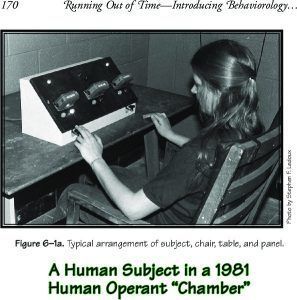Research Explores Simultaneous Responses (Science Is Lovable 19 of 72)
The lower pen, which we call the event pen, records the onset and offset of experiment–defined events by going up one step after which it can only go back down one step. As the paper unrolls, this pen marks a line at two slightly different levels according to whether it has moved up or moved down its one allowed step.









